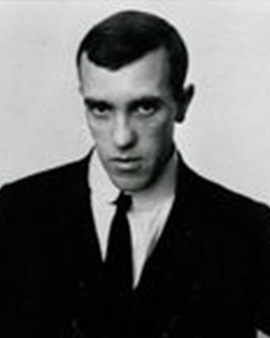The artist Konrad Magi should never be forgotten. Like no other, the painter knew how to absorb international currents and styles and reflect them in an uninhibited as well as very personal way. With this imaginative strategy, Magi succeeded in penetrating deep into the core of landscape and painting. In Estonia, his home country, Konrad Magi is considered a pioneer of modern painting. Initially, the creative creator was engaged in Impressionism and Fauvism. But at some point Magi had devoted himself to Expressionism. The new artistic trend at the beginning of the 20th century pleased the artist extraordinarily. It gave him the opportunity to rebel against old-fashioned norms and to better express his own inner feelings. He chose his own abstract interpretations for his landscape paintings as well as for his figure compositions.
But this was by no means the flagpole of his more artificial work. He began to work with more muted color schemes, and in addition to landscape paintings, he now also painted flower paintings and portraits. For a time Magi settled in Paris. There he became acquainted with works by other great artists. At home in Estonia, the artist preferred to take up his brush. In the silence and solitude of the Nordic nature Magi created a multitude of enigmatic landscape paintings, which particularly distinguished him as an artist. Fields as well as meadows under restless cloud formations and gloomy sky tents were his specialty. In addition, it was not difficult for him to immerse coasts, lakes, mountains and forests in an almost psychedelic color aesthetic. In his creative work, Magi fell into a trance. The creator knew how to activate both positive and negative emotions. Instead of always reproducing the real world, Magi rather wanted to capture his own mood.
In his native Estonia, Konrad Magi was extremely popular. On the international scene, however, the extraordinary artist was rather overlooked. However, today's art world has meanwhile cast an eye on the brilliant works of the painter. Finland and Denmark are dedicating exhibitions to him. The art association GL STRAND presents the contemporary legacies to the ready public. In the same breath, the personality of Konrad Magi is brought into focus. It is mentioned that the painter, attended the city school in Tartu and then completed an apprenticeship as a carpenter. After graduation Magi worked in a furniture company. At the same time he participated in drawing courses of the German Artists Society of Tartu. He also had great interest in theater, playing the violin and various sports. In the course of the unrest of the 1905 revolution, Magi fled to Helsinki. There he came into contact with the Noor-Eesti circle. In 1907 Konrad Magi studied at a liberal arts academy in Paris. In the following years the artist was stranded in Norway, France, Germany and finally returned to Estonia. At first he worked as a drawing teacher at various schools, until he finally devoted himself to painting.
×





.jpg)
.jpg)
.jpg)
.jpg)
.jpg)
.jpg)
.jpg)
.jpg)
.jpg)
.jpg)
.jpg)
.jpg)
.jpg)
.jpg)
.jpg)
.jpg)






